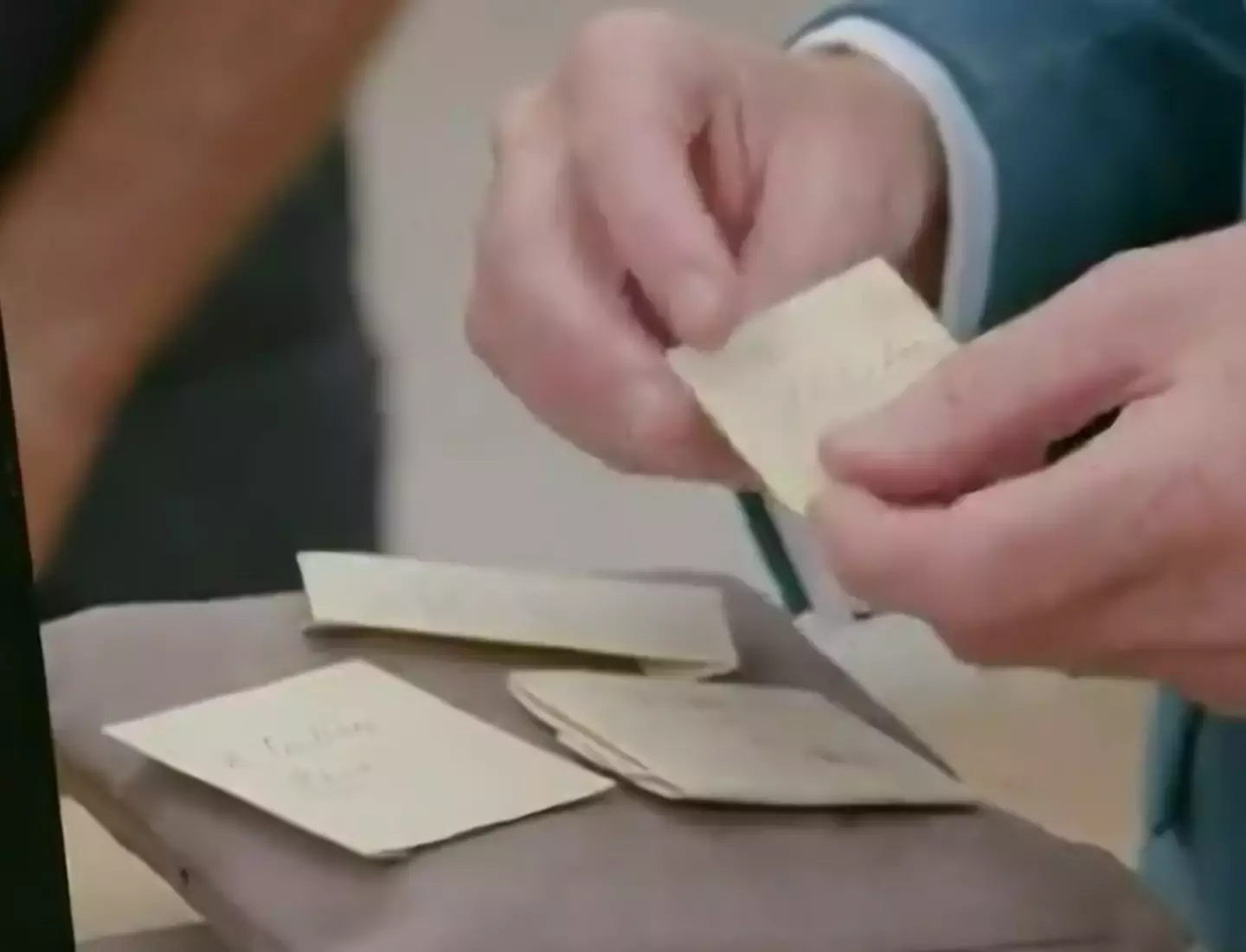
An Antiques Roadshow expert refused to value a rare item due to its meaningful past.
The latest episode of the BBC series aired on Sunday (28 April), and featured a surprising valuation of an item spotted when host Fiona Bruce took the show to Ulster Folk Museum.
While the TV series usually shows family members getting shocked at how much their generational items are worth, it looks like the experts have finally been stumped.
Guest antiques expert Frances Christie was taken aback when she was asked to take a look at and value a portrait of a priest, who was also the owner's uncle.
Advert
Christie asked the guest: "This is an incredibly striking portrait of a priest in watercolour and I love how the artist has captured the glint on his glasses,
"Can you tell us a bit more about the sitter?"
The guest then revealed: "The sitter is my uncle, Father Dan Cummings. And he was a Redemptorist priest,
"And when World War II broke out, Ireland was neutral. But then, they got a request for chaplains. So, Dan volunteered and joined the British Army. He was part of the liberation forces at Belsen."

Advert
Christie then began to explain the importance of its link to Belsen, mentioning that it is 'one of the very large concentration camps in the north of Germany', while also being one of the first liberated by British troops.
"Once the liberation happened, he stayed on in the hospital for one year," the guest continued.
"And during that period, this was painted by one of the inmates, presumably as part of his recuperation and rehabilitation."
Christie also spotted that the painting was signed with 'Baumeiser, Hans' and dated 1946 at the top, a year after the camp was liberated.
"As you say, it must've been part of the period directly afterward when, you know, we all know the story now, (but) it was such a shocking discovery when they liberated Belsen," Christie went on to say.
Advert

Describing the piece as 'incredible', the expert said: "What I think is incredible about this portrait though is that it brings alive - and you're sharing with us - the experiences of clearly someone, from here who devoted his services and clearly made a real difference."
After which the antiques expert refused to value the painting due to just how significant and important it was due to its links with World War II.
The expert explained: "In terms of value, I mean, this is the Antiques Roadshow, so we usually do put a value on things but I'm not going to put a monetary value on it today because it is so much more important than that.
"Because of its connection with Belsen, because of your uncle being someone from Belfast who was there at the moment of liberation... it has so much more of an important social (and) historical content," Christie concluded.
Advert
A rare occurrence on the show that is known for valuing numerous classic items.
The strangest items that have appeared on Antiques Roadshow
Some items on the show have just been downright bizarre...
Human hair from famous poets

Advert
Ever dreamed of owning the locks of William Wordsworth and Samuel Taylor Coleridge?
Well, it'll cost you, as when this item was brought on Antiques Roadshow last year it was valued at upwards of £40,000.
The clippings were a family heirloom, and according to expert Justin Croft, one was taken on a person's deathbed.
Yikes.
Nightmare fuel Teletubbies concept art
Turns out Tinky-Winky, Dipsy, Laa-Laa and Po originally looked pretty scary.
Jonathan Hills drew the concept art for the future children's TV icons. He sadly died in 2020 and his wife brought some of his original sketches on the show in 2022.
Expert Mark Hill admitted some of the drawings were 'creepy', but went on to value the individual pieces between £500 and £2,000, and the entire collection of 80 drawings at up to £80,000.
A bottle of pee
Who could forget the time expert Andy McConnell inadvertently drank urine back in 2016?
A bloke called John found the bottle in his garden, and McConnell used the taste test to figure out what was inside, thinking it was port.
Fast forward to 2019, and Fiona Bruce revealed to McConnell: "Inside were these brass pins, all of these dating from the late 1840s, and the liquid - urine, a tiny bit of alcohol and one human hair."
It turned out it was a 'witches bottle', buried on the threshold of a house as a protection against curses and bad luck.
Topics: Antiques Roadshow, BBC, TV, Money